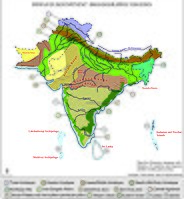
Photo from wikipedia
Transition zones are problematic in biogeographical classification as they represent artificial biotic areas. A review of transition zones into existing biogeographical classifications shows conflicting area taxonomies. While many authors consider… Click to show full abstract
Transition zones are problematic in biogeographical classification as they represent artificial biotic areas. A review of transition zones into existing biogeographical classifications shows conflicting area taxonomies. While many authors consider transition zones as overlap zones or areas of biotic mixing, only a few have considered excluding them from biogeographical classification all together. One way of incorporating transition zones into a natural classification is by treating them as artefacts of geographically overlapping temporally disjunct biotic areas. In doing so, geographically overlapping biotic areas may occupy the same space but have different boundaries and histories. Temporally disjunct areas do form natural hierarchical classifications, as seen in the paleobiogeographical literature. A revision of each transition zone will determine whether they are artificial areas, areas within their own right or potentially geographically overlapping temporally disjunct regions.
Journal Title: Biological Journal of The Linnean Society
Year Published: 2020
Link to full text (if available)
Share on Social Media: Sign Up to like & get
recommendations!